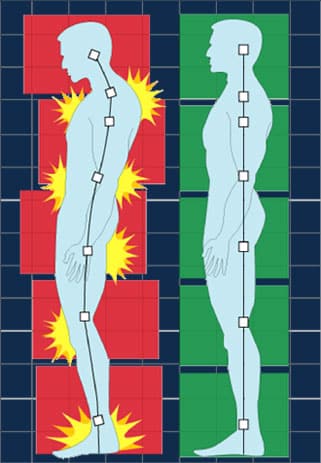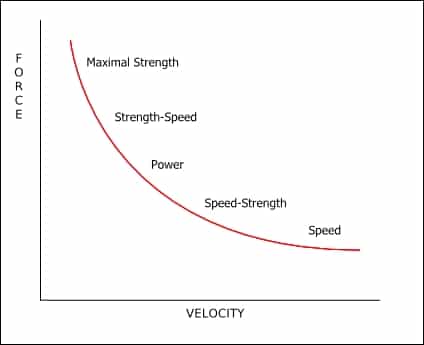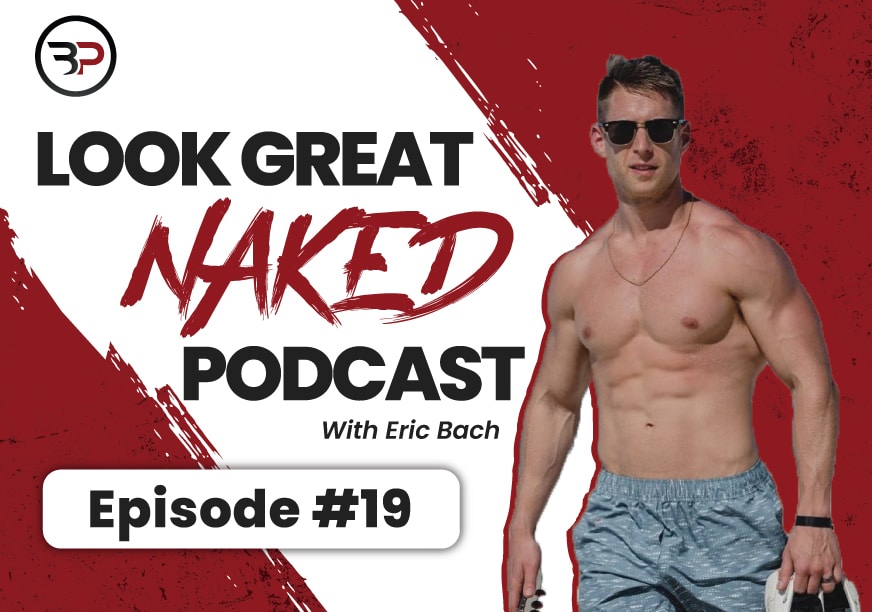Eight Tips for Long Term Lifting
March 31, 2015
Key Points
- Regardless of your chronological age, your training age stresses the joints, tendons, and ligaments of the body
- Long-term success in the gym requires consistent effort and health.
- Measure your choices in the gym with risk vs. reward in mind.
- Never abandon progressive overload in major, multi-joint movements.
With nearly 15 years of hard lifting and high-performance training, my body is rapidly accruing mileage.
Things that used to “crackle” ache.
I can’t wake-up and deadlift with a half-assed warm-up without the fear of my spine folding like an accordion.
Coffee is an absolute must-have to jump-start the workout or my day for that matter.
While my age, time under the bar, and list of aches pales in comparison to many of you, I often hear friends, colleagues, and ex-athletes talking about “the good old” days in the gym when they could lift non-stop, go out and party, and still hit the gym with reckless abandon, as if they’re now done, washed up, and retired.
“Or my knee is always sore, I’m done squatting. “
“My back is jacked up from deadlifts, I’ll just take the week off, from everything. “
“Man, I can’t get this tendonitis in my elbow to go away. I’m just going to skip the gym altogether. “
Sound familiar? I’m sure most of you have heard or said an iteration of those, I’m guilty too.
While my mentors were right when saying “ you’ll have to start training differently” and “you won’t be able to train this hard forever,” there’s still no pass to spend your evenings watching Dance Moms and eating Little Caesars bacon wrapped pizzas.
The way I see it, the “good old days” don’t have to be a thing of the past; rather, a consistent zone of high-performance training regardless of chronological or training age.
Instead of cashing in and accepting mediocrity, use every ache, pain, and each day of recovery as a tool to live, learn, and pass on your experience. In other words, every training issue is another opportunity to find a new route to the same destination of a high-performance body.
While I still have a lot to learn, 15 years of hard training, thousands of hours coaching, and a few aches and pains have helped me re-evaluate my training and coaching to optimize for the long term. After all, you can’t expect your 50-year-old office-working clients to be able to follow every “hardcore” bodybuilding article you read online because it looks intense, bro.
No, not at all.
After all, with age comes the chance to combine experience with wisdom to optimize the most important factor for a long-termed awesome body—consistent effort.
As a result, I’ve been able minimize aches and pains to optimize training consistency, helping my clients improve performance to build strong, shredded, and athletic bodies on their terms, regardless of age.
Now, I’d like to share these thoughts with you, knowing whole-heartedly most of them will change again with more experience. That said, If I took most of these tips into account 5-10 years ago, I’d be more jacked, have fewer aches and pains, and by all accounts, be a happier, a higher performance dude.
Whether you’re new to the iron game, a seasoned vet, or somewhere in-between these tips will accelerate your high-performance gains while preserving your body for the future.
- There are absolutely no absolutes
In writing, using “absolutes” is a key component of strong writing. Unfortunately, absolutes in the training world are few and far between.
- You must do the big three, deadlift, squat, and bench, bro.
- If you don’t squat ass to grass, you’re a chicken-legged chump and have no shot at getting big, and strong.
- You must drink a post-workout shake or your workout will be wasted.
Sound familiar?
I grew up reading “absolutes” and while most things are well pointed and awesome advice, life is far too chaotic for absolutes to true.
There is no absolute best way for everyone—you have to find what works for you and get awesome at it.
You might not be able to squat ass to grass due to a pre-existing knee injury. Or different bony hip anatomy. Or you lose core integrity below parallel, forcing your spine to flex and round, potentially causing severe injury.
See what I mean?
There are no absolutes, period. Find what works for you within the constraints of your body and your abilities, and get world class at it.
- Focus on posture-biomechanics are key
Despite our efforts in the gym, the sad truth is most of us have the posture of quasimodo due to extensive times sitting, hunched in front of a computer.
Shortened, tight hips, rounded shoulders, and forward head position all open the door for imbalances and issues throughout the entire body.
As it pertains to athletes and average Joes, they might struggle to fully extend the hip and instead, use lumbar extension during sprinting and hinge movements.
Rounded shoulders and thoracic mobility restrictions might lead to further stability issues in the shoulders, making pressing problematic.
Biomechanics and proper body positions are, and always will be the key to for safe and efficient movement. Ideal position will vary from person to person, but it’s safe to say that stacking the joints without compensation ( knee directly over the foot, hips extended, and shoulders retracted), is vital.
As the Greg Roskopf of Muscle Activation Techniques (M.A.T.) says ” joint position dictates muscle function. “
Focus on putting your body in the best anatomy positions and let your muscles do the job they’re meant to do, rather than excessively loading tissues for functions they’re not designed to handle.
- Spend More time in the Speed-strength/velocity portion of the strength curve
I love lifting heavy as much as the next guy, but years of heavy loading takes its toll on the body. Even more, heavy, near maximal loading is extremely taxing on the central nervous system.
Now, think about what happens after a period of heavy lifting, overreaching, and how it’s similar to the average, middle-aged professional:
- You’re mentally stale (you house 4 cups of coffee to get back to equilibrium)
- You don’t sleep well, hence the extra coffee
- Increase in cortisol, decrease in testosterone, making you irritable and low energy.
- Depressed immune system, making you more likely to get sick.
See what I mean?
I’m not slamming heavy strength training, far from it. Instead, keep the heavy days few and far between and do most of your work between 65-85% 1-RM and move the bar as fast as possible instead of 80-95%+ 1-RM.
Going for a new max is fine occasionally, but realize the similarities between your stressful lifestyle, hard training, and learn to balance them out.
Instead of going for a new max all the time like a super-charged 18-year-old, stay submaximal and explosive for most of your training.
You’ll stay strong, minimize joint stress, and keep your mind and body sharp rather than beaten down and lethargic.
- Reduced axial loading
Axial loading, also known as loading from the top-down on the spine, is a key component to building a strong, resilient body and making overall improvements in bone density.
Problem is, older lifters can become less tolerant to the high neurological demands, compressive forces, and in some cases, greater shear forces on the spine.
By no means does axial loading need to be eliminated, but occasionally deloading from axial loaded exercise can provide a break for both the spine and nervous system.
- Keep heavy days few and far between
The biggest difference between now and five years ago is how often I’m able to lift heavy. I can still get after it, hoist big deadlifts or a heavy clean, but the days must be few and far between.
While heavy one-five rep sets are great for building strength, more experienced lifters will have a much harder time recovering from heavier weights. Instead of always blitzing the 1-5 rep range, bump strength work to 4-8 reps, track progress, and accelerate every rep.
Once you have a significant base of strength, you’ll preserve most of your strength and might even build more muscle in this rep range, all while preserving the nervous system and joints.
- Use Longer warm-ups
The first years in the gym we could all walk in the gym and jump directly into one or two warm-up sets on the first lift and be good to go.
That was the warm-up.
The whole thing.
If I tried that now, I’d be a heaping mess, writhing in pain on the floor from excessive joint stress and pathetic results in the gym.
Regardless of age, you’re much better spending 6-12 minutes to warm-up, activate under-activated tissues and trouble spots, reinforcing optimal joint position and posture, and activating your body for activity. Then, hit an exercise to jump-start your nervous system and have better performance in the gym, as covered here.
It doesn’t matter whether you’re hitting a 30-minute lift or over an hour—take time to warm-up for safe, consistent progress.
Side Note: If you need more time to warm-up, such as early morning workouts, come dressed in layers and drink a warm beverage to rapidly increase core temperature.
- Partials
Listen I know you’re still going to bench press, deadlift, and all the other stuff meatheads love to do.
You probably still ask “what do you bench” to your buddies, and I’m cool with that.
That said, you don’t always need to do the “staple” big three, especially with your shoulders are screaming during deep presses and your back twinges when pulling from the floor.
Instead, back things off every few weeks from full lifts and use compound “partial” movements to hit the major muscle groups, bust through sticking points, and gain strength.
For example: For the next four weeks floor press instead of bench press or deadpull instead of smoking full deadlifts.
Man-love for bench pressing and deadlifting is real, but so are shoulder and low back dysfunction. Rather than ditch the ole’ stand by, opt for partial movements that still get you jacked and tickle your ego without the pain.
- Bodyweight training
Like any other mode of training, you still need progressive overload on basic movements, which is why most lifters dismiss bodyweight training after they get decent at it.
After all, once you’re able to knock out sets of 30-50+ push-ups and 10+ chin-ups things get boring, right?
Well, you’re right. In their basic form, simple bodyweight exercises won’t provide enough tension to create overload in the muscles for further adaptiaton… unless you advance their variations.
Instead of a chin-up, add a weight vest or dip belt. Hell, start progressing towards a one-arm pull-up, a truly impressive feat of strength.
Add weight to your push-ups, start doing suspended push-ups, or start busting out one arm push-ups like Rocky.
Ab wheel rollouts, sprints, jumps, pistol squats, front levers, natural glute ham raises, single leg hip thrusts and their variations are all high-performance exercises that can be done nearly anywhere, anytime, and in most cases, pain-free compared to spending more time underneath the bar.
Advance your training variations and use bodyweight training for strength, rather than endless high-rep sets. If you’re not already working on a few of these exercises add them in today and work your way to the hardest progression possible.
Eight Tips for Long Term Lifting Wrap Up
With these eight minor adjustments you can continue to train safely and make progress for decades to come.
Don’t wait– there are no absolutes in training, train smarter from the get-go and you’ll avoid most of the aches and pains that have seasoned lifters sitting on the sideline.
Do Less, Do it Better, and Achieve More.
If you’re looking to maximize sound principles of training and unleash your inner athlete, then the Bach Performance Community is for you.
Join us now and get two free ebooks and loads of free content, gifts, workouts, and information.
So, unless you hate wicked awesome training info for free, you get on the list here.













[…] 8 Tips for Long-Term Lifting via Eric Bach […]
[…] Eight Tips for Long Term Lifting via Eric […]
[…] 8 Tips for Long Term Lifting (Eric […]
[…] Eight Tips for Long Term Lifting – Eric Bach If you want to be in the iron game for more than a year or two you should probably think about more than just what is on the bar on any given day. […]
[…] Eight Tips for Long Term Lifting via Bach Performance […]